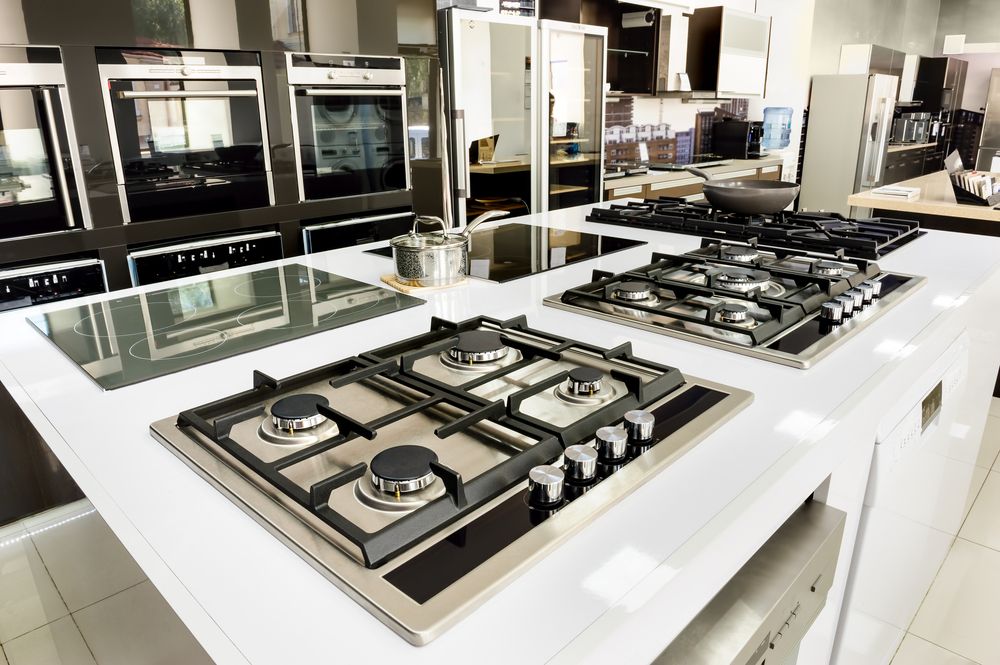Choosing between a gas and an electric stove is a common dilemma faced by many homeowners. Both types of stoves have their own advantages and drawbacks, particularly when it comes to efficiency and cost savings. The decision can largely depend on your specific needs, local utility rates, and personal preferences.
Efficiency of Gas Stoves
Gas stoves are often praised for their efficiency in heat production and control. They work by burning natural gas or propane to produce an open flame that heats your cookware directly. This direct transfer of heat can result in more rapid temperature changes and precise control over cooking temperatures.
- Instant Heat: One of the significant advantages of using a gas stove is the immediate availability of heat. As soon as the burner is ignited, you have full cooking power at your disposal.
- Temperature Control: Gas stoves allow for precise temperature adjustments, which are vital for certain cooking techniques such as sautéing and simmering. The visual confirmation of flame size helps users gauge and set the appropriate heat levels.
- Overall Cooking Efficiency: Energy efficiency in cooking is partly about how well a stove turns energy into heat. Gas stoves typically have an efficiency rating of about 40-55%, with some sophisticated models reaching higher efficiencies by reducing excess heat waste.
However, gas stoves can also be less energy-efficient if not operated properly. Flame dispersal can lead to heat loss if the flame extends beyond the bottom of the pan. Gas stoves inherently release combustion byproducts into the kitchen, necessitating proper ventilation to ensure air quality and safety.
Efficiency of Electric Stoves
Electric stoves, which may come with coil burners, smooth tops, or induction elements, typically offer a different kind of efficiency. Their operation is based on passing electricity through heating elements to generate heat, which is then used for cooking.
- Heat Distribution: Electric stoves often provide more even heat distribution across the cooking surface. This uniformity is particularly significant in baking and dishes that require steady cooking temperatures.
- Energy Efficiency: Electric stoves are generally considered to have a higher initial energy efficiency than gas stoves, with some induction cooktops boasting efficiencies of around 75-85%. This is due to better energy transfer to the cookware.
- Safety and Cleanliness: Without an open flame, electric stoves reduce the risk of fires and accidental combustion. Their flat surfaces make cleaning simpler and often safer, since there are no open parts that can trap spilled food.
One downside of many electric stoves, particularly the non-induction ones, is the slower temperature adjustment. Because electric coils or elements need time to heat up or cool down, they can lead to a lag in temperature control, which may affect the cooking of delicate dishes.
Cost and Savings Considerations
The cost of operation and potential savings over time are significant factors for many homeowners when deciding between gas and electric stoves. The expenses associated with each type of stove are calculated through a mixture of upfront costs, energy costs, maintenance, and potential savings.
- Upfront Costs: Typically, gas stoves have a slightly higher initial purchase cost than electric stoves. However, if your kitchen is not pre-fitted for gas, additional costs for plumbing and gas line installation should be considered. Conversely, homes without a 240-volt outlet for an electric stove might incur additional installation costs.
- Energy Costs: The long-term operational cost is influenced mainly by local utility rates. Generally, electric stoves have higher operational costs due to electricity prices being higher on average than gas. However, places where electricity is derived from hydroelectric or renewable sources might offer lower rates.
- Maintenance and Longevity: Gas stoves require regular check-ups and maintenance on burners and gas lines to prevent leaks. Electric stoves, meanwhile, may require fewer service calls but could necessitate costly repairs if their electronic boards or induction surfaces get damaged.
- Potential Savings: Savings can widely vary based on personalized use patterns. For example, avid cooks who rely on high-heat techniques may save more on a gas stove, given its immediate and consistent heat. On the flip side, electric stoves may yield cost benefits through energy rebates or by lowering peak energy usage in regions with time-of-use pricing structures.
Sustainability and Environmental Impacts
Environmental considerations can influence the decision between gas and electric stoves, especially for the environmentally conscious homeowner. Each type has its own ecological footprint and impacts related to energy consumption and emissions.
- Gas Stoves: Natural gas combustion releases carbon dioxide and methane, both potent greenhouse gases. Although it burns cleaner than some fossil fuels like coal, it still contributes to emissions. However, in areas where biogas is available, switching to a renewable gas source can reduce the carbon footprint.
- Electric Stoves: The environmental impact of electric stoves greatly depends on how the electricity is generated. Stoves powered by coal-intensive electric grids carry a significant carbon footprint. Conversely, those connected to grids with high penetration of renewables, like wind or solar, have a much lower impact.
- Induction Stoves: Among the electric stove options, induction models stand out due to their efficiency. They directly transfer electromagnetic energy to cookware, making them one of the most energy-efficient means of cooking. They avoid excess heat loss and contribute to lower indoor cooling requirements.
Equally important to the source of energy is the question of resource efficiency. Utilizing energy-saving cookware such as pressure cookers and ensuring proper kitchen insulation can also minimize overall environmental impacts regardless of the stove type.
Making the Right Choice
When it comes to deciding between a gas and an electric stove, addressing your specific needs and circumstances is crucial. Consider your cooking habits and how each stove type can complement them. For frequent entertainers or culinary enthusiasts, the nuanced temperature control of gas stoves might be indispensable. Alternatively, individuals prioritizing low impact and ease of cleaning may favor modern electric options.
Evaluate your kitchen’s pre-existing infrastructure. If your home is already set up for gas, it might make both logistical and financial sense to stick with a gas stove. Conversely, if an economic and sustainable electric setup is in place, investing in a compatible electric stove could be advantageous.
In selecting the choice that aligns best with your priorities—whether it’s cost savings, efficiency, sustainability, or convenience—you can ensure that your stove becomes a reliable partner in your kitchen ventures. From whipping up weekday dinners to tackling gourmet creations, the stove you choose will influence your culinary experience and household energy footprint for years to come.



